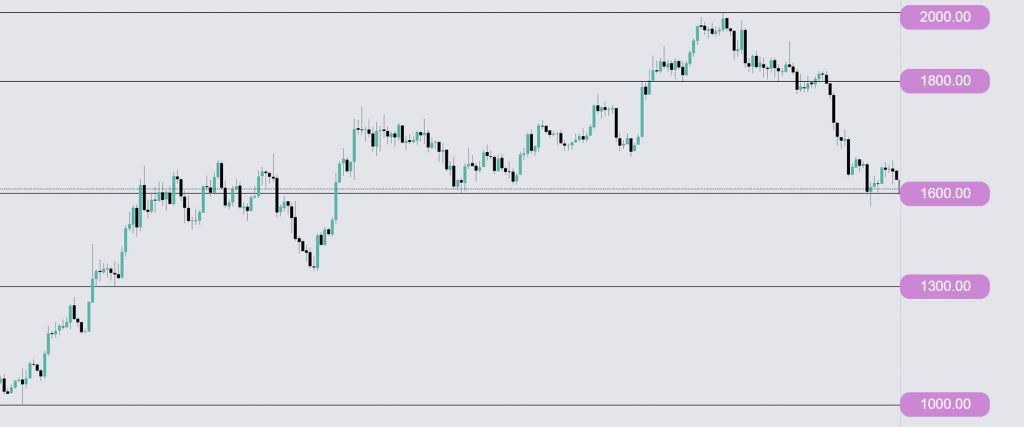One thing that sets crypto markets apart from other publicly traded assets is sentiment. Having a high portion of individual investors, or the so-called “retail traders,” the panic, rush, and other mental factors play a bigger role in crypto than they usually do with stocks, as compared to the rational factors, like research and technical analysis.
When you enter this space, it’s essential to understand how the mental factors work and above what’s known as the “psychological levels,” which is an area that brings together the trading characteristics and human nature.
What are psychological levels?
Simply put, psychological levels are the prices that people believe make sense. In other words, these are round numbers that describe traders’ perception of the fair value of an asset. With all the numbers and decimals any asset’s price usually include, it’s easier to think of the closest round number as the logical value of an asset.
This usually leads to many traders placing their limit orders and building their short-term trading strategies between round numbers and keeping the price fluctuations in between them as well.
Let’s put this into action. Try to remember what the highest price Bitcoin has ever got to.
You’re probably thinking of the number $68,000, while in fact, it was $68,789. The actual number is technically closer to $69,000, which is also how some people remember it, but breaking through the $68,000 level was the event that stuck to our memories and grabbed people’s and the media’s attention, and the excitement of the breakthrough is probably the reason behind the other $789.
Support and Resistance
The two main psychological levels you probably keep hearing and need to know about are the resistance and support levels. A support level is a number that an asset’s price is likely to stay above. It’s the value the market supports and believes the asset’s price should not go below. On the other hand, a resistance level is a number that an asset’s price is likely to stay below because the market – buyers in particular – are resisting paying more than this price for the subject asset.
Even though the psychological levels usually hover around round numbers, it’s unlikely that the price would settle on a round price for long. Therefore, when looking at the charts we can see the price breaking through the resistance-support range for some instances, but these are usually fast and rebound quickly back inside the range.
For example, starting from mid-July until mid-August, Ethereum’s price witnessed several gains, pushed mainly by The Merge’s news, and the overall market’s partial recovery. As you can see in the picture below, Ethereum wouldn’t move to a higher price and remain at the same level. Instead, the levels at which the price would fluctuate would go higher.

Between June 13 and July 16, Ethereum’s price went under the $1,000 support level only once for a brief period and stayed under the $1,300 resistance level for the whole time, until it broke from it turning the $1,300 mark into a support level, with a new resistance level of $1,600. Then these support-resistance levels moved up again from $1,300-1,600 to $1,600-1800, and later to $1,800-$2,000.
But this is only the case for Ethereum… before The Merge. With less volatility in the market, the numbers tend to be less round, and on calm days, the range for Ethereum could be $1,650-1,775. With more volatility, people would tend to be more optimistic or pessimistic, thus expecting breakthroughs in the digits of hundreds or thousands, making the range vaster and the support and resistance levels, more round, ending with one, two or even three zeros.
Psychological levels as guidelines
Support and resistance levels are especially useful when the market is less volatile and when the price moves within limited margins. Those who trade daily depend on these levels to make minimal profits out of hourly price changes, using them as entry and exit points.
Also, when an asset’s price rallies, it usually moves from one resistance-support range to another, and the previous resistance level would turn – mostly but not always – into the new support level.
Another good use case of psychological levels is getting signs for upcoming hikes or price drops, as most of these start with breaking through these levels repetitively.
Psychological levels can be used as guidelines during calm times, but they are no guarantees of price stability. You can use these levels to understand the markets’ latest movements, but your trading decisions must always be based on your own research and understanding of the projects you’re investing in.


